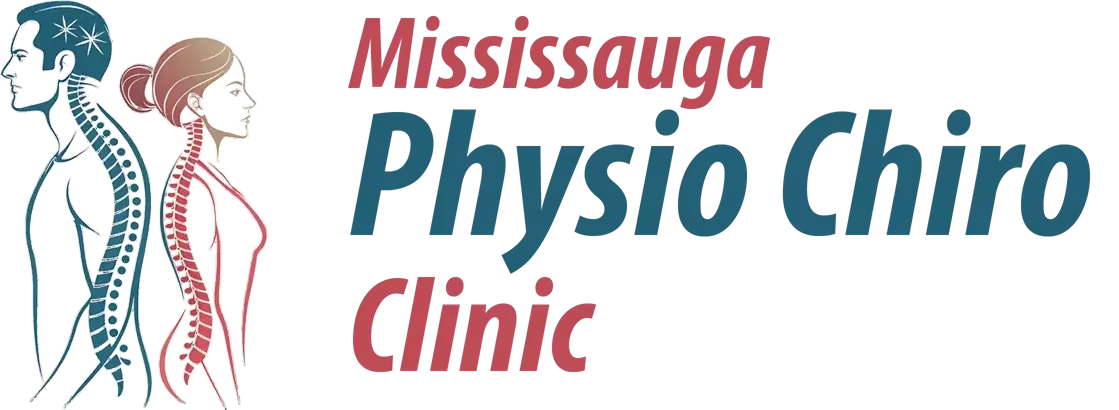Chiropractor for Hand Injury in Mississauga If you’re looking for a chiropractor for hand injury in Mississauga, we offer specialized care tailored to your unique needs. Our thorough assessments identify the root causes of your discomfort, whether it’s a fracture, tendon injury, or repetitive strain issue. We incorporate pain management techniques, rehabilitation exercises, and education to guarantee a smooth recovery. Our Expert Physiotherapist & Chirotherapist in Mississsauga is dedicated to restoring your hand’s mobility and strength while preventing future injuries. We believe in empowering you with knowledge about your condition, and there’s much more to explore in our approach to effective healing and rehabilitation strategies. About Our Physiotherapy and Chiropractic Services At Mississauga Physio Chiro Clinic, we offer extensive physiotherapy and chiropractic services designed to effectively address hand injuries and support your recovery journey. Whether you’re dealing with a wrist injury, finger injury, or conditions like carpal tunnel syndrome, we recognize how debilitating hand pain can be. Our team is dedicated to providing personalized care that focuses on your unique needs. We begin with a thorough assessment to identify the root cause of your discomfort. Based on this evaluation, we develop a tailored treatment plan that incorporates pain management techniques, hand rehabilitation exercises, and range of motion exercises to enhance your recovery. Our physiotherapy and chiropractic services work in tandem to promote healing and restore function. For those suffering from repetitive strain injury, we emphasize education and preventive strategies to help you avoid future issues. Throughout your treatment, we’re here to support you, ensuring you feel comfortable and informed every step of the way. By combining our expertise in physiotherapy and chiropractic care, we aim to not only alleviate your symptoms but also empower you to regain strength and mobility in your hands. Together, we’re committed to helping you return to your daily activities pain-free. Understanding Hand Injuries: Causes and Chiropractic Treatment Hand injuries can frequently stem from a variety of causes, including sports activities, workplace accidents, or underlying medical conditions, and understanding these factors is crucial for effective chiropractic treatment. We often see patients dealing with hand trauma, which can manifest as a thumb injury, wrist fracture, or finger fracture. Each type of injury can result in hand swelling, stiffness, and discomfort, making everyday tasks challenging. Tendon injuries and ligament injuries are also common, affecting the hand’s functionality and strength. Nerve injuries may occur as well, leading to numbness or weakness in the hand, further complicating recovery. By addressing these issues thoroughly, we can tailor a chiropractic treatment plan that includes physical therapy to restore mobility and reduce pain. It’s essential to recognize that recovery isn’t just about alleviating symptoms; it’s about regaining full function. With the right approach, we can help our patients overcome the challenges posed by hand injuries. We’re committed to guiding you through this process, ensuring that you receive the care and support you need to heal effectively. Chiropractic Evaluation for Hand Pain and Mobility Issues A thorough chiropractic evaluation is vital for identifying the underlying causes of hand pain and mobility issues, allowing us to develop a personalized treatment plan tailored to each patient’s unique needs. During our examination, we’ll look at various factors that could contribute to symptoms, such as a hand fracture, metacarpal fracture, or a sprained wrist. We’ll also analyze for signs of hand weakness, nerve compression, and median nerve injury, which could lead to hand numbness or discomfort. Evaluating the range of motion and strength in your hand is essential, as this helps us understand how conditions like tendonitis might be affecting your daily activities. Based on our findings, we’ll recommend appropriate hand therapy strategies, including grip strength training to enhance your overall function. Our goal is to alleviate pain, improve mobility, and restore your hand’s natural capabilities. By addressing the specific issues affecting your hands, we can help you regain the quality of life you deserve. Remember, understanding your condition is the first step toward effective treatment and recovery. Realigning Hand Fractures and Bone Injuries with Chiropractic Care Realigning fractured bones in the hand is a significant aspect of our chiropractic care, as it helps restore proper function and alleviate pain for our patients. We often encounter various injuries, such as scaphoid fractures, which can greatly impact mobility. Early intervention is essential for managing hand bruising and lacerations that result from trauma. In cases of deep cuts or flexor tendon injuries, we work closely with other healthcare professionals to guarantee a thorough approach. This might include nerve repair and occupational therapy, which aids in the rehabilitation process. Our treatment protocols often involve splinting and bracing to provide the necessary support while the healing occurs. Additionally, we emphasize the importance of hand strengthening exercises to promote recovery and prevent future injuries. By realigning the fractured bones, we not only relieve immediate discomfort but also enhance the overall functionality of the hand. Our goal is to empower patients through knowledge and tailored care, making sure they regain their strength and confidence in their hand’s abilities. Together, we can navigate the path to recovery, ensuring superior hand health for our patients in Mississauga. Chiropractic Techniques for Tendon and Ligament Healing In our practice, we recognize that effective healing extends beyond bone realignment to include targeted chiropractic techniques that support the recovery of tendons and ligaments in the hand. Conditions like wrist tendonitis, hand contusions, and dislocated or sprained fingers can greatly impact daily life. Our approach focuses on enhancing tendon repair and ligament repair through specialized treatments. We often incorporate cold therapy to reduce inflammation and pain, especially in cases of hand arthritis and osteoarthritis. This method aids in managing symptoms associated with conditions like trigger finger, promoting a more comfortable healing environment. By using gentle mobilization techniques, we can encourage flexibility and strength in the affected areas, facilitating a faster recovery. For individuals experiencing chronic issues or acute injuries, we tailor our techniques to meet specific needs. This personalized care not only addresses immediate concerns but also helps prevent future
Physiotherapy for Spinal Cord Injuries
Physiotherapy for Spinal Cord Injuries in Mississauga We recognize the challenges faced by individuals with spinal cord injuries and offer specialized Physiotherapy for Spinal Cord Injuries in Mississauga to support your recovery. Our tailored treatment plans focus on enhancing mobility, strength, and overall quality of life. Using a combination of exercises, manual therapy, and advanced techniques like functional electrical stimulation, we aim to promote ideal healing and neuroplasticity. We believe early intervention is essential for regaining independence and preventing complications. Together, we can foster a supportive environment that encourages progress and resilience. Discover how our approach can make a significant difference in your rehabilitation journey. About Our Physiotherapy and Chiropractic Services At Mississauga Physio Chiro Clinic, we offer extensive physiotherapy and chiropractic services tailored to support individuals with spinal cord injuries in their journey toward recovery and improved quality of life. Our dedicated team understands the complexities of spinal cord injury rehabilitation, and we’re committed to providing personalized treatment plans that address each patient’s unique needs. Our top Mississauga Physiotherapy and Chiropractic Services focus on enhancing spinal cord function, alleviating spinal cord pain, and promoting overall spinal cord health. Through targeted spinal cord injury exercises, we aim to strengthen muscles, improve mobility, and foster independence. We also integrate spinal cord therapy techniques that may include manual therapy, electrical stimulation, and individualized stretching programs. In every session, we prioritize empathy and understanding, ensuring that our patients feel supported throughout their spinal cord injury recovery. By closely monitoring progress, we adjust treatment plans as necessary, always aiming to maximize outcomes. Our goal is to empower individuals to regain control over their lives and achieve their rehabilitation goals. Together, we’ll navigate the path toward improved function and well-being, fostering hope and resilience in the face of challenges. Spinal Cord Injuries: Causes, Effects, and Recovery Spinal cord injuries can arise from various causes, including traumatic events like accidents and non-traumatic factors such as diseases, profoundly impacting individuals’ mobility and quality of life. These injuries often lead to spinal cord damage, resulting in symptoms such as weakness, numbness, or even spinal cord paralysis. Understanding the spinal cord injury causes is vital for effective treatment and rehabilitation. Recovery from a spinal cord injury involves an extensive approach, including spinal cord treatment and rehabilitation. We engage in spinal cord therapy to help individuals regain mobility and improve their overall well-being. It’s important to set realistic expectations regarding spinal cord recovery time, as this can vary greatly from person to person. Ongoing spinal cord research continues to shed light on innovative therapies and interventions that can enhance recovery outcomes. By staying informed and involved in the latest advancements, we can better support those affected by spinal cord injuries. With empathy and dedication, we endeavor to provide the best possible care, ensuring that individuals can navigate their recovery journey with confidence and hope. Together, we can foster resilience in the face of adversity and improve the quality of life for those affected. Key Causes of Spinal Cord Injuries and Risk Factors Understanding the key causes of spinal cord injuries and associated risk factors is vital for prevention and effective rehabilitation strategies. Spinal cord trauma can occur from various incidents, including vehicle accidents, falls, and sports injuries. These traumatic events often lead to spinal cord fractures, resulting in spinal cord nerve damage and dysfunction. Moreover, we must acknowledge non-traumatic causes, such as diseases or conditions that contribute to spinal cord degeneration, including tumors or infections. Such factors can lead to spinal cord swelling and lesions, which may complicate injury management and recovery. Identifying risk factors is fundamental for spinal cord injury prevention. For instance, engaging in high-risk activities without appropriate safety measures can elevate the likelihood of injury. Likewise, age and pre-existing health conditions can increase vulnerability to spinal cord injuries. In our approach, we also emphasize the importance of using spinal cord adaptive devices to enhance mobility and independence post-injury. By understanding these causes and risk factors, we can better support individuals in their rehabilitation journey and promote a proactive approach to spinal cord injury management. Recognizing Symptoms and Diagnosing Spinal Cord Injuries Recognizing the symptoms of spinal cord injuries is important for timely diagnosis and intervention, as swift action can greatly affect recovery outcomes. When we encounter a potential spinal cord injury, we should look for common signs such as loss of movement, sensation changes, or even paralysis in limbs. These symptoms may indicate the need for immediate spinal cord diagnostics. To accurately diagnose the injury, healthcare professionals often employ spinal cord scans, including spinal cord MRI, CT scans, and X-rays. These imaging techniques provide essential information about the extent of the injury and help us understand the prognosis for spinal cord disability. By detecting any damage to the spinal cord, we can better assess the impact on neurological function. Early recognition and diagnosis are imperative for effective spinal cord injury therapy and support. With the right interventions, we can improve outcomes and enhance quality of life for those affected. Remember, understanding these symptoms and the importance of swift action can make a significant difference in the journey toward recovery and rehabilitation. Together, we can guarantee that individuals receive the spinal cord injury support they need when it matters most. How Physiotherapy Supports Spinal Cord Rehabilitation Physiotherapy plays an essential role in the rehabilitation journey for individuals with spinal cord injuries, helping them regain mobility and improve their overall quality of life. Through targeted spinal cord therapy, we focus on enhancing spinal cord injury mobility, promoting flexibility, and facilitating nerve regeneration. Our approach aims to address various spinal cord disorders, ensuring that each patient receives personalized support tailored to their unique needs. We utilize techniques such as spinal cord decompression and stimulation, which can greatly aid in spinal cord healing. By implementing these methods, we provide our patients with the necessary spinal cord support to navigate their rehabilitation effectively. Additionally, we emphasize the importance of maintaining spinal cord flexibility, allowing for better movement and function. Together, we
Chiropractor for Sprains and Strains
Chiropractor for Sprains and Strains in Mississauga At our Best Chiropractic Clinic in Mississauga, we recognize the importance of addressing sprains and strains effectively. Our experienced Chiropractor for Sprains and Strains specializes in treatments that focus on pain relief and enhancing natural healing through personalized care. We begin with a thorough assessment of your symptoms and provide tailored rehabilitation programs designed to restore mobility and strength. Utilizing innovative techniques like adjustments and soft tissue therapies, we help alleviate discomfort and prevent future injuries. We’re here to support your recovery journey with compassion and expertise. For more valuable insights into our approaches and services, we encourage you to explore further options available to you. About Our Physiotherapy and Chiropractic Services At Mississauga Physio Chiro Clinic, we regularly provide thorough physiotherapy and chiropractic services tailored to address sprains and strains effectively. We recognize that both acute and chronic injuries can greatly impact your quality of life, which is why our approach focuses on extensive injury management. Our physiotherapy and chiropractic services are designed to alleviate pain and promote healing for various conditions, including soft tissue injuries and muscle strains. We offer personalized sprain treatment plans that incorporate rehabilitation for sprains, ensuring that our patients recover fully and safely. For those dealing with sports injuries, we emphasize the importance of proper recovery techniques to prevent future occurrences. Our experienced team works collaboratively to streamline the recovery process, utilizing evidence-based practices that enhance your body’s natural healing abilities. Whether you’re facing a recent injury or struggling with chronic sprain recovery, we’re here to support you every step of the way. Our commitment to your health means we’ll guide you through the rehabilitation journey, providing the tools and resources needed for optimal recovery. Together, we can help you regain strength, mobility, and confidence in your physical activities. Sprains vs. Strains: Understanding the Key Differences Understanding the differences between sprains and strains is essential for effective treatment and recovery, as both injuries affect different parts of the body and involve distinct types of damage. A ligament sprain occurs when the ligaments connecting bones are overstretched or torn, often resulting in swelling, bruising, and pain—commonly referred to as sprain symptoms. In contrast, a tendon strain affects the tendons, which connect muscles to bones, leading to similar soft tissue damage but presenting strain symptoms like muscle spasms and weakness. When we look at acute sprains, they usually arise from sudden injuries, while chronic strains develop over time due to repetitive motions. Knowing these distinctions helps us implement the right first aid for sprains and strains, such as rest, ice, compression, and elevation. In our commitment to injury prevention, we emphasize the importance of proper warm-up techniques and strength training. By understanding sprains vs. strains, we can better support our recovery and health journey, ensuring we address each injury appropriately and effectively. Primary Causes of Sprains and Strains Recognizing the primary causes of sprains and strains helps us take proactive steps to prevent these common injuries and manage them effectively when they do occur. Sprains and strains often arise from various factors, including overuse injuries and joint instability. Ankle sprains, wrist sprains, and knee sprains frequently result from sudden twists or falls, while repetitive strain injuries stem from the same motions performed over time, leading to ligament injury or tendon injury. Additionally, work-related injuries can contribute greatly to these conditions, especially in jobs that require repetitive movements or heavy lifting. Muscle tears may occur when we push our bodies beyond their limits, especially during physical activities without proper warm-up or stretching. Being aware of these primary causes allows us to implement preventive measures, such as proper training techniques, strengthening exercises, and ergonomic adjustments in our workspaces. By focusing on these aspects, we can minimize the risk of injuries and guarantee we maintain our physical health. The right approach to understanding these causes empowers us to create a safer and more resilient lifestyle. Recognizing the Symptoms of Sprains and Strains Identifying the symptoms of sprains and strains is essential for prompt treatment and recovery, as these injuries often manifest through pain, swelling, and reduced mobility in the affected area. Common indicators of a back strain or shoulder strain include joint pain, tenderness, and inflammation. We might notice swelling or bruising around the affected joint, which can help us differentiate between a sprain and a strain. In the case of a hamstring strain, we may experience a sudden sharp pain, often accompanied by a limited range of motion. It’s vital that we pay attention to these signs, as they can lead to further complications if not addressed. Inflammation can become persistent if we ignore these symptoms, making recovery more challenging. When we recognize these symptoms early, we can seek appropriate treatment, which will facilitate a better strain diagnosis and a more effective recovery plan. By understanding our body’s signals, we empower ourselves to take the necessary steps toward healing. Remember, if we’re unsure about our symptoms, consulting a healthcare professional is always a wise choice. How Chiropractors Diagnose Sprains and Strains Chiropractors employ a detailed assessment process to accurately diagnose sprains and strains, guaranteeing we receive the most effective treatment tailored to our specific needs. During our initial consultation, we discuss our symptoms and medical history, allowing the chiropractor to identify the type of injury, such as a quadriceps strain or groin strain. This information is crucial for an accurate sprain diagnosis. Next, we undergo a physical examination, where the chiropractor evaluates our range of motion and checks for tenderness, swelling, or instability. This helps assess the severity and nature of the injury. We may also receive recommendations for cold therapy for sprains to reduce inflammation. Once the diagnosis is established, a customized treatment plan is created, often incorporating physical therapy for strains, soft tissue rehabilitation, and mobility exercises. The plan may include rest for strains, compression for injuries, and strategies to promote ligament healing. Through this extensive approach, chiropractors guarantee we comprehend our condition and the steps necessary for
Chiropractic Care for Headaches and Migraines
Chiropractic Care for Headaches and Migraines in Mississauga We recognize how debilitating headaches can be, and that’s why we’re dedicated to offering specialized chiropractic care for headaches in Mississauga. Our approach addresses the root causes, such as spinal misalignments and muscle tension. By developing personalized treatment plans, we focus on relieving discomfort from tension, migraines, and other headache types. Our holistic methods at Mississauga Physio Chiro Clinic may include adjustments, soft tissue therapy, and ergonomic assessments, all aimed at improving your overall wellness. If you’re ready to take steps toward relief, there’s more useful information waiting to guide your path to better health. About Our Physiotherapy and Chiropractic Services At our Trusted Physiotherapy & Chiropractic Clinic in Mississauga, we specialize in extensive physiotherapy and chiropractic services designed to alleviate headaches and enhance overall wellness. We recognize the impact that chronic headaches and tension headaches can have on daily life, which is why we focus on effective headache relief strategies tailored to each individual. Our approach to headache treatment involves identifying the underlying causes and developing a personalized headache management plan. Through chiropractic care for headaches, we address spinal misalignments that may contribute to headache symptoms, promoting better alignment and overall health. Our skilled practitioners employ various techniques to reduce muscle tension, improve circulation, and enhance mobility, all of which can aid in headache prevention. We take the time to listen to your concerns and work collaboratively to guarantee you receive the best possible care. By providing education on headache causes and prevention, we empower you to take control of your wellbeing. With our thorough physiotherapy and chiropractic services, we’re dedicated to helping you achieve lasting relief from headaches, allowing you to enjoy a more active and fulfilling life. Together, we can work towards effective solutions for your unique headache challenges. Exploring Headaches: Types, Causes, and Triggers Understanding the various types of headaches, along with their causes and triggers, is vital to developing effective treatment strategies that can enhance our approach to relief and prevention. Headache types can range from tension and migraine to cervicogenic headaches, each with distinct characteristics and underlying causes. For example, stress headaches often arise from tension in the neck and shoulders, leading to headache and neck pain that can be debilitating. Identifying headache triggers is essential; common triggers include stress, poor posture, and dehydration. By recognizing these factors, we can craft tailored headache treatment plans that address individual needs. Additionally, headache disorders can vary in frequency and intensity, making accurate headache diagnosis important for effective management. Incorporating headache prevention strategies into our daily routines can greatly improve our quality of life. This might involve stress management techniques, ergonomic adjustments, or regular physical activity. Ultimately, by thoroughly understanding the complexities of headaches, we can empower ourselves to take proactive steps toward effective relief and long-term prevention. Together, we can navigate the path to better head health. The Role of Chiropractic Care in Alleviating Headaches Chiropractic care offers a holistic approach to alleviating headaches by addressing underlying musculoskeletal issues that often contribute to pain and discomfort. As we explore the role of a chiropractor for headaches, we recognize how effective headache therapy can be in managing various types, including tension-type headaches. Research has shown that there’s a strong connection between headache and posture; poor alignment can lead to increased tension and pain. By employing targeted techniques, we can greatly improve posture and reduce headache triggers. We also emphasize the importance of integrating headache relief tips into daily routines, such as stress management strategies and ergonomic adjustments. In addition, headache massage and headache physical therapy can complement chiropractic adjustments, providing further relief and promoting relaxation. Understanding the headache triggers list is vital; it allows us to tailor our treatments to individual needs, addressing specific headache and stress connections. Ultimately, chiropractic care not only targets the symptoms but also works to resolve the root causes of headaches, fostering long-term wellness and improved quality of life. By considering these factors, we can create a thorough plan that effectively alleviates headache pain and enhances overall health. Targeted Chiropractic Solutions for Tension Headaches Finding targeted chiropractic solutions for tension headaches requires a thorough approach that addresses both the physical and emotional factors contributing to pain. As headache specialists, we acknowledge that tension headaches often stem from muscle tightness, stress, and poor posture, leading to headache and neck pain. Our chiropractic adjustments focus on realigning the spine and alleviating tension in the neck and upper back, which can greatly reduce headache patterns. We also provide personalized headache treatments, including soft tissue therapy and lifestyle modifications, to enhance headache relief. Moreover, we recognize the connection between headache and dizziness, which can complicate the experience of tension headaches. By addressing both the physical and emotional aspects of your condition, we aim to create extensive headache remedies tailored to your needs. It’s essential to work together to identify triggers and develop a plan that empowers you to manage your symptoms effectively. With the right chiropractic care, we can guide you towards a life with fewer headaches, improved well-being, and a better quality of life. Let’s take this journey towards headache relief together. Chiropractic Approaches to Managing Migraine Symptoms Many patients experience migraines as debilitating episodes that can disrupt daily life, but we can offer effective chiropractic approaches to help manage and alleviate these symptoms. Our goal is to address not just the headache intensity but also the associated issues like headache and nausea, fatigue, and hormonal factors that may trigger chronic migraines. We understand that many individuals rely on headache medications for relief. However, chiropractic care can provide alternative strategies, such as acupuncture for headaches and specific headache relaxation techniques. These methods can help reduce the frequency and severity of migraines without the drawbacks of pharmaceuticals. Incorporating practices like headache yoga can also be beneficial, promoting relaxation and mindfulness while targeting headache risk factors. We encourage our patients to explore these holistic options, as they can complement traditional treatments and enhance overall well-being. Effective Chiropractic Techniques
Chiropractor for Neck Pain
Chiropractor for Neck Pain in Mississauga We’re dedicated to providing personalized chiropractic care for neck pain in Mississauga. Our approach involves thorough assessments to identify underlying causes, including poor posture and muscle strain. We utilize targeted spinal adjustments and soft tissue therapies to alleviate pain and improve function. Our Top Mississauga Physiotherapy & Chiropractic Services have treatment plans also incorporate neck exercises that enhance flexibility and strength. We recognize the impact of neck pain on quality of life and offer holistic solutions tailored to your needs. If you’re interested in discovering how our methods can benefit you, there’s much more helpful information to explore. About Our Physiotherapy and Chiropractic Services At Mississauga Physio Chiro Clinic, we specialize in providing extensive physiotherapy and chiropractic services designed to alleviate neck pain and enhance overall well-being. Our dedicated neck pain specialists focus on delivering personalized neck pain treatment that addresses each patient’s unique needs. Through thorough neck pain diagnosis, we identify the root causes of discomfort, allowing us to tailor effective management strategies. Our physiotherapy for neck pain incorporates various techniques aimed at promoting neck pain relief. We guide our patients through targeted neck exercises that strengthen muscles and improve flexibility. Additionally, we emphasize neck posture correction to alleviate strain and prevent future issues. Chiropractic care for neck pain complements. Exploring the Causes and Types of Neck Pain Neck pain can stem from a variety of causes, ranging from poor posture to underlying medical conditions, and understanding these factors is essential for effective treatment. We often encounter patients experiencing acute neck pain, which may arise suddenly due to a neck injury or whiplash from an accident. Conversely, chronic neck pain develops gradually and can be linked to conditions like cervical spondylosis or degenerative disc disease. Neck stiffness is another common symptom that frequently accompanies these types of pain. This stiffness can result from a neck strain, often caused by repetitive movements or prolonged periods in poor cervical spine alignment. Additionally, muscle tension and stress can exacerbate these issues, leading to more discomfort. It’s crucial for us to recognize that neck pain can vary greatly in severity and duration. While acute neck pain might resolve quickly with proper care, chronic neck pain may require more extensive treatment strategies. By identifying the underlying causes and types of neck pain, we can develop tailored approaches that address our patients’ specific needs and promote long-term relief. How Chiropractic Care Alleviates Neck Pain Chiropractic care offers effective solutions for alleviating neck pain by focusing on spinal alignment and restoring proper function to the cervical spine. Through targeted adjustments, we can help relieve cervical pain associated with various conditions, such as neck sprains, pinched nerves in the neck, and cervical disc herniation. Our approach emphasizes enhancing neck mobility, allowing patients to regain their range of motion and reduce neck tension. In addition to manual adjustments, we often recommend neck strengthening exercises tailored to your specific needs. These exercises not only aid in recovery but also help prevent future injuries by fortifying the muscles that support the neck. We also discuss the importance of ergonomic neck support, especially for those who spend long hours at a desk or engage in repetitive activities. Identifying the Root Causes of Neck Pain Through Diagnosis Understanding the various factors contributing to neck pain is essential for effective diagnosis and treatment, as it allows us to tailor our approach to each individual’s specific needs. Neck pain can stem from several causes, including a herniated cervical disc or a bulging cervical disc, both of which can lead to cervical radiculopathy. This condition occurs when nerve roots in the cervical spine become irritated or compressed, resulting in pain that may radiate down the arm. Additionally, we must consider cervical myelopathy, a serious condition involving spinal cord compression that can arise from cervical stenosis or neck nerve compression. Other contributing factors could include neck muscle imbalances or a previous cervical spine injury, which can exacerbate discomfort and hinder neck pain recovery. Chiropractic Techniques for Aligning the Cervical Spine Several effective techniques can be employed to align the cervical spine, helping to alleviate pain and restore function for those suffering from neck discomfort. We often utilize chiropractic techniques for aligning the cervical spine, focusing on gentle adjustments that can reduce upper back and neck pain. These adjustments aim to correct misalignments, which may contribute to muscle strain in the neck, neck arthritis, or a cervical disc bulge. In addition to spinal adjustments, we incorporate soft tissue therapies to relieve neck spasms and tension, promoting overall cervical spine health. These holistic neck pain treatments also include exercises and stretches designed for neck pain prevention, empowering our patients to take an active role in their recovery. For those experiencing neck tension headaches, we provide tailored strategies to mitigate triggers and improve posture. By addressing the underlying causes of neck pain, we can help our patients regain mobility and enhance their quality of life. Our commitment is to create a safe, supportive environment where everyone can achieve ideal cervical spine health and find relief from their discomfort. Specialized Chiropractic Care for Whiplash and Neck Injuries When it comes to whiplash and neck injuries, our specialized chiropractic care focuses on personalized treatment plans designed to address each patient’s unique needs and promote ideal recovery. We recognize that neck pain can greatly impact daily life, often leading to increased stress and affecting mental health. Our team of chiropractors employs a combination of techniques, including neck stretches, heat therapy for neck pain, and targeted adjustments to alleviate discomfort and improve mobility. We also offer massage therapy for neck pain, which can help reduce tension and enhance the healing process. At our neck pain clinics, we prioritize thorough neck pain support, ensuring that each treatment plan is tailored to the individual’s specific condition. By addressing the physical aspects of neck injuries, we also acknowledge the psychological effects of chronic neck pain and aim to foster a holistic healing environment. Together, we can create an effective
Physiotherapy for Neck Pain
Physiotherapy for Neck Pain in Mississauga If you’re dealing with neck pain in Mississauga, we’re here to help. Our tailored physiotherapy services, including specialized Physiotherapy for Neck Pain, focus on relieving both acute and chronic neck pain through manual therapy, targeted exercises, and ergonomic adjustments. We’ll assess your unique situation and develop a personalized treatment plan that improves mobility and addresses underlying issues. Our experienced therapist in Mississauga understands the impact of neck pain on daily life and aims to empower you with effective strategies for relief and prevention. Together, we can explore various options to enhance your well-being, and we’re just getting started with how we can support your recovery journey. About Our Physiotherapy and Chiropractic Services At Mississauga Physio Chiro Clinic, we offer an extensive range of physiotherapy and chiropractic services tailored to address neck pain and enhance overall well-being. Our dedicated team of neck pain specialists understands the complexities of neck pain treatment and is committed to providing effective solutions. We focus on physiotherapy for neck pain that includes personalized neck pain relief strategies, ensuring that each patient receives the care they need. Our approach encompasses thorough neck pain management techniques, incorporating chiropractic care for neck pain that aims to alleviate discomfort and restore function. We prioritize neck posture correction, helping patients develop better alignment to prevent future issues. Additionally, we emphasize the importance of neck strengthening exercises and neck mobility improvements, which can greatly enhance recovery and overall health. We believe in a holistic approach, combining our expertise in physiotherapy and chiropractic services to deliver ideal results. Our goal is to empower our patients with the knowledge and tools they need to manage their neck pain effectively, promoting long-lasting relief and improved quality of life. Together, we can work towards a pain-free future. Exploring the Causes and Types of Neck Pain Understanding the various causes and types of neck pain is essential for developing effective treatment plans that can help our patients achieve lasting relief. Neck pain can manifest in different forms, including acute neck pain, which often arises suddenly from a neck injury or strain, and chronic neck pain, which persists over time and may result from conditions like cervical spondylosis or a herniated cervical disc. Common neck pain causes include muscle strains, which can lead to neck stiffness, and sprains from improper lifting or sudden movements. Additionally, poor posture—especially during prolonged periods of sitting—can contribute greatly to neck discomfort. It’s vital to recognize that each condition presents its own set of symptoms and challenges. For instance, while a neck strain typically results from overexertion, a herniated cervical disc may involve radiating pain down the arms. Recognizing Common Conditions Associated with Neck Pain Recognizing the common conditions associated with neck pain is essential for us to tailor effective treatment strategies that address our patients’ specific needs. Neck pain can stem from various issues, including cervical pain, neck tension, and conditions like whiplash. A pinched nerve in the neck can lead to significant discomfort, and we often see this alongside bulging cervical discs. Cervical radiculopathy, characterized by nerve root compression, is another condition that we need to be aware of when diagnosing neck pain. It’s imperative to take into account neck muscle imbalances, which can contribute to persistent neck spasms and discomfort. Additionally, cervical disc herniation can result in severe pain and limited mobility, making accurate neck pain diagnosis essential for effective treatment. Identifying the Key Symptoms of Neck Pain Identifying the key symptoms of neck pain is essential for us to provide targeted and effective treatment that alleviates our patients’ discomfort and improves their quality of life. Neck pain can manifest in various ways, including stiffness, sharp or dull aches, and discomfort that radiates to the shoulders or upper back. Many of our patients also report tension-type headaches, often linked to neck pain and stress. Common symptoms include restricted range of motion, making neck exercises and stretches difficult to perform. We often recommend specific neck stretches to help alleviate tension and promote cervical spine alignment. Additionally, we need to be aware of neck nerve compression, which can cause tingling or numbness in the arms and hands. For effective neck pain prevention, it’s vital to identify these symptoms early. By addressing them promptly, we can work together to develop a holistic neck pain treatment plan that includes strengthening exercises and relaxation techniques. Ultimately, our goal is to equip our patients with the tools they need to manage their neck pain and lead a healthier, more active life. Pinpointing the Root Cause: How Neck Pain is Diagnosed After noting the key symptoms of neck pain, we can begin to pinpoint the root cause through an extensive diagnostic process that involves detailed evaluations and patient history. At neck pain clinics, we typically start by discussing your medical history, including any cervical spine injuries or known conditions like degenerative disc disease or cervical stenosis. Next, we perform a physical examination, gauging your range of motion and tenderness in the neck. We often inquire about neck pain and headaches to determine if they’re related to muscle strain in the neck, neck tension headaches, or even forward head posture, often exacerbated by tech neck from prolonged device use. Diagnostic imaging, such as X-rays or MRIs, might be necessary to visualize any structural issues. By understanding the underlying causes of your neck pain, whether from muscle strain or more serious conditions, we can tailor an effective neck pain recovery plan. Our goal is to help you regain mobility and alleviate discomfort, ensuring a holistic approach to your neck pain management. Together, we’ll work towards a solution that addresses the root cause, providing you with lasting relief. Effective Physiotherapy Techniques for Relieving Neck Pain Effective physiotherapy techniques can play an essential role in alleviating neck pain and restoring function, guiding patients toward a path of recovery and improved well-being. We often begin with a thorough assessment to identify issues like cervical myelopathy or a cervical disc bulge, tailoring our approach to each
Chiropractor for Back Pain
Chiropractor for Back Pain in Mississauga If you’re seeking a chiropractor for back pain in Mississauga, we recognize how essential it is to find effective relief. Our Dedicated Physiotherapy & Chiropractic Clinic in Mississauga specializes in personalized treatment plans focused on spinal alignment and functionality. We utilize a holistic approach, incorporating exercises to strengthen supporting muscles and techniques to address both acute and chronic pain. Whether it’s lower back pain, sciatica, or discomfort from degenerative conditions, we’re here to help. We prioritize your comfort and recovery, ensuring you feel empowered throughout the process. There’s more to explore about how we can support your journey to better back health. About Our Physiotherapy and Chiropractic Services At Mississauga Physio Chiro Clinic, we specialize in providing extensive physiotherapy and chiropractic services tailored to meet each patient’s unique needs for effective back pain relief. We recognize that back pain can greatly impact daily life, which is why our dedicated team of back pain specialists is committed to developing personalized back pain treatment plans. Our chiropractic care for back pain focuses on spinal alignment and functionality, aiming to alleviate pain and improve mobility. We also offer physical therapy for back pain, which includes targeted back pain exercises designed to strengthen the muscles that support the spine. This combination of therapies enhances back pain management and promotes long-term healing. For those seeking non-surgical back pain treatment options, our approach emphasizes rehabilitation and education. We guide our patients through back pain rehabilitation programs that incorporate both physiotherapy and chiropractic care, ensuring a thorough treatment experience. Exploring Back Pain: Common Causes and Classifications Understanding the various factors that contribute to back pain is vital for effective treatment and management. Back pain can be broadly classified into two categories: acute and chronic. Acute back pain often arises suddenly, commonly due to a muscle strain or injury, while chronic back pain persists for three months or longer, frequently linked to conditions like degenerative disc disease or a herniated disc. When we talk about specific areas, lower back pain is the most prevalent, often caused by a bulging disc or sciatica, where nerve pain radiates down the leg. Upper back pain, though less common, can result from poor posture or overuse injuries. It’s important to recognize that not all back pain is the same. Each classification has unique causes and treatment approaches. For instance, while muscle strain might lead to acute pain, chronic back pain can stem from ongoing conditions that require a more thorough management strategy. By understanding these factors, we can better address our individual pain experiences and work towards effective solutions tailored to our needs. Chiropractic Solutions for Lower Back Pain Chiropractic care offers a holistic approach to alleviating lower back pain, focusing on spinal alignment and overall body mechanics. We recognize that lumbar pain can be debilitating, often resulting from issues like nerve compression or spinal stenosis. Through extensive back pain diagnosis, we identify the root causes of your discomfort, enabling us to tailor effective chiropractic solutions for lower back pain. Our back pain therapy includes various techniques aimed at restoring proper alignment and improving mobility. Core strengthening exercises play an essential role in supporting the spine, while posture correction strategies help prevent future issues. By addressing these factors, we aim to enhance your overall well-being and reduce chronic pain management needs. Incorporating back pain remedies such as manual adjustments, stretches, and lifestyle modifications further aids in your recovery journey. We believe in empowering our patients with knowledge and tools to manage their pain effectively. Together, we can work towards alleviating your lower back pain and restoring your quality of life, ensuring you can enjoy daily activities without discomfort. Let’s explore these chiropractic solutions and find the best approach for your unique situation. Effective Chiropractic Treatments for Upper Back Pain Upper back pain can greatly impact daily activities, but effective chiropractic treatments can help restore function and alleviate discomfort. We recognize that thoracic pain can stem from various causes, including muscle imbalances and poor ergonomics for back pain. By addressing these underlying issues, we can develop personalized chiropractic treatments aimed at reducing back pain symptoms and enhancing mobility. Our approach often includes spinal adjustments, which can realign the vertebrae in the upper back, promoting better posture and reducing tension. We also emphasize the importance of back pain and exercise; tailored physical activity can strengthen the supporting muscles and aid in back pain recovery. Additionally, we utilize holistic back pain treatment methods, incorporating soft tissue therapies and lifestyle modifications to support overall well-being. For those with a history of spinal cord injury, we take extra care to guarantee our treatments are safe and effective. By focusing on the individual needs of our patients, we can guide them towards a pain-free life, helping them regain their daily activities and improve their quality of life. Together, we can tackle upper back pain and foster lasting recovery. Addressing Sciatica and Nerve Pain with Chiropractic Care Sciatica and nerve pain can be debilitating, but with targeted chiropractic care, we can alleviate discomfort and restore normal function. Many of us have experienced the sharp, shooting sensations that accompany sciatica or a pinched nerve, which can severely impact our daily lives. By addressing these issues through chiropractic adjustments, we can relieve pressure on affected nerves, improving back pain and mobility. Our approach often includes thorough assessments to identify back pain triggers, allowing us to customize treatment plans tailored to our needs. Chiropractic care can reduce inflammation and enhance circulation, promoting healing and providing back pain support. Additionally, we may recommend physiotherapy exercises to strengthen muscles and improve flexibility, further aiding back pain prevention. We understand how nerve pain can hinder everyday activities, and our goal is to help restore your quality of life. With our expertise in chiropractic techniques, we can effectively address sciatica and other nerve-related issues, empowering us to move freely and comfortably again. Let’s work together to find relief and regain control, ensuring a healthier, more active lifestyle. Chiropractic Approaches
Physiotherapy for Back Pain
Physiotherapy for Back Pain in Mississauga In our Best Physiotherapy & Chiropractic Services in Mississauga, we offer tailored physiotherapy services for back pain relief, emphasizing evidence-based techniques to suit each patient’s unique needs. Our approach includes personalized treatment plans that incorporate manual therapy, exercises, and educational support, empowering us to manage symptoms effectively. We focus on understanding the underlying causes of back pain, whether they stem from poor posture, muscle strains, or chronic conditions. By addressing physical and mental health factors, we enhance mobility and promote overall well-being. If you’re curious about specific techniques and strategies we implement, you’ll find valuable insights as you explore further. About Our Physiotherapy and Chiropractic Services At Mississauga Physio Chiro Clinic, we offer an extensive range of physiotherapy and chiropractic services designed to effectively address and alleviate back pain. Our approach focuses on evidence-based strategies tailored to each patient’s unique needs. We recognize that back pain can stem from various causes, and our goal is to provide thorough back pain treatment options that promote long-term relief. Our physical therapy for back pain includes a variety of techniques aimed at improving mobility, strength, and overall function. We incorporate back pain exercises into our treatment plans, ensuring that patients actively engage in their recovery. Our back pain management strategies emphasize non-surgical back pain treatment methods, allowing us to help you avoid invasive procedures whenever possible. Additionally, our back pain rehabilitation programs are designed to educate patients about back pain symptoms and the importance of maintaining a healthy lifestyle. We’re committed to empowering our patients with the knowledge and tools necessary for effective back pain relief. By focusing on personalized care, we aim to enhance your quality of life and support you on your journey toward recovery. Together, we can tackle back pain and help you return to the activities you love. Exploring the Causes and Types of Back Pain Understanding the various causes and types of back pain is essential for us to develop effective treatment plans that cater to individual needs. Back pain can manifest in different forms, primarily categorized as lower back pain and upper back pain. Acute back pain often arises suddenly due to injuries, such as muscle strain or a back injury, while chronic back pain persists over time, frequently linked to more complex issues like a herniated disc or bulging disc. We must also consider conditions like sciatica, where pain radiates down the leg due to nerve compression. Each type of back pain can stem from diverse causes, including poor posture, heavy lifting, or degenerative changes. Understanding these distinctions allows us to tailor our physiotherapy approaches effectively. Key Conditions That Contribute to Back Pain Various key conditions frequently contribute to back pain, including muscle strains, herniated discs, and degenerative disc disease. We often encounter patients suffering from lumbar pain due to muscle imbalances, which can lead to chronic discomfort if not addressed. Spinal stenosis, characterized by the narrowing of the spinal canal, can also result in nerve compression, causing significant pain and mobility issues. Another common condition we see is a pinched nerve, often resulting from herniated discs that press against surrounding nerves. This can manifest as sharp pain, tingling, or weakness in the affected area. Arthritis and scoliosis are additional conditions that can exacerbate back pain, as they affect spinal alignment and joint function. In our practice, we emphasize the importance of accurate back pain diagnosis to tailor effective chronic pain management strategies. By understanding these key conditions, we can develop targeted physiotherapy interventions that address the underlying issues contributing to back pain. Through education and personalized treatment plans, we aim to empower our patients to take control of their health and alleviate discomfort associated with these prevalent conditions. Recognizing the Symptoms of Back Pain Recognizing the symptoms of back pain is essential for timely intervention and effective treatment, as early identification can prevent the progression of underlying conditions. We often experience a range of back pain symptoms, including sharp or dull aches, stiffness, or radiating pain to the legs. These symptoms can arise from various back pain triggers, such as poor posture, physical strain, or prolonged sitting. In our journey toward back pain recovery, it’s vital to be aware of how back pain can also be linked to stress and anxiety. The interplay between these elements can exacerbate our discomfort, making effective back pain therapy even more important. Physiotherapy can play a key role in alleviating symptoms through tailored exercises and posture correction techniques designed to strengthen our back and improve overall function. We should also consider exploring various back pain remedies, such as heat therapy or stretching, which can provide immediate relief. By recognizing these symptoms early, we empower ourselves to seek appropriate physiotherapy interventions, ultimately enhancing our quality of life and minimizing the impact of back pain on our daily activities. Identifying the Underlying Causes of Back Pain: Diagnostic Insights Identifying the underlying causes of back pain is vital for developing an effective treatment plan that addresses not just the symptoms but the root of the problem. As back pain specialists, we recognize that issues can arise from various sources, including thoracic pain, cervical spine pain, or inflammation. Each of these conditions may stem from lifestyle factors such as poor posture, lack of exercise, or excessive strain on the back. In back pain clinics, we conduct thorough assessments to pinpoint the cause of discomfort. This often involves evaluating the patient’s history, physical condition, and lifestyle habits. Engaging in core strengthening exercises is a significant part of our approach, as it helps to stabilize the spine and prevent further issues. Additionally, we consider the benefits of chiropractic care for back pain, which can offer relief and improve mobility. By focusing on back pain prevention and addressing the underlying causes, we empower patients to take control of their health. Our goal is to create a tailored treatment plan that not only alleviates pain but also promotes long-term wellness and a better quality of life. How Physiotherapy Provides Effective









